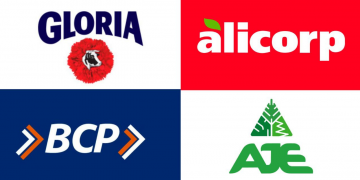Crédito: fuente
Virgin Hyperloop announced that for the first time it has conducted a test of its ultra-fast transportation system with human passengers.
The test took place on Sunday afternoon at the company’s DevLoop test track in the desert outside Las Vegas, Nevada. The first two passengers were Virgin Hyperloop’s chief technology officer and co-founder, Josh Giegel, and head of passenger experience, Sara Luchian. After strapping into their seats in the company’s gleaming white and red hyperloop pod, dubbed Pegasus, they were transferred into an airlock as the air inside the enclosed vacuum tube was removed. The pod then accelerated to a brisk 100 miles per hour (160 km/h) down the length of the track, before slowing down to a stop.
It’s an important achievement for Virgin Hyperloop, which was founded in 2014 on the premise of making Tesla and SpaceX CEO Elon Musk’s vision of a futuristic transportation system of magnetically levitating pods traveling through nearly airless tubes at speeds of up to 760 mph (1,223 km/h) a reality.
The DevLoop test track is 500 meters long and 3.3 meters in diameter. The track is located about 30 minutes from Las Vegas, out in the kind of desert that hyperloop pods could one day traverse in minutes. The company says it has conducted over 400 tests on that track, but never before with human passengers — until today.
“No one has done anything close to what we’re talking about right now,” Jay Walder, CEO of Virgin Hyperloop, told The Verge. “This is a full scale, working hyperloop that is not just going to run in a vacuum environment, but is going to have a person in it. No one has come close to doing it.”
The Pegasus pod used for the first passenger test, also called XP-2, was designed with help from famed Danish architect Bjarke Ingels’ design firm. It represents a scaled-down version of what Virgin Hyperloop hopes will eventually be a full-sized pod capable of carrying up to 23 passengers. It weighs 2.5 tons and measures about 15-18 feet long, according to Giegel. Inside, its lush white interior is meant to be familiar to passengers, who may not be immediately comfortable with the idea of slingshotting through a vacuum-sealed tube at the speed of a commercial jet.
“This is not like some crazy, newfangled science fiction invention,” Luchian said in an interview several days before the test. “This is something that reminds me of a place that I’ve been and I’ve used many times, that I would feel comfortable putting grandma in and sending her on a visit somewhere.”
Prior to the test, Luchian said she was eager to experience the acceleration, as well as monitor the temperature inside the pod and the ventilation system. Giegel said he wanted to see the system’s safety procedures in action, and would be keeping track of whether they’re able to maintain communication with operators during the test. “If it’s not safe enough for me, it’s not safe enough for anyone,” he said.
Giegel said the acceleration will feel similar to a plane taking off. The pod is propelled by magnetic levitation — the same technology used for bullet trains. The top speed of the fastest commercial bullet train, the Shanghai Maglev, hovers around 300 mph.
To be sure, the pod didn’t reach the hyperloop’s theoretical maximum speed of 760 mph. Virgin Hyperloop projects that with enough track it can eventually get up to 670 mph — but the company’s record to date is 240 mph, which it hit in 2017.
“It’ll be a bit short,” Giegel said before the test. “We’ll get up to probably about 100 miles an hour, a little over, and we’ll accelerate, decelerate, and it’ll be smooth. We’re not astronauts, we’re just there — we’re sitting in it.”
In 2013, Musk published his “alpha paper” which theorized that aerodynamic aluminum capsules filled with passengers or cargo could be propelled through a nearly airless tube at airliner-speeds of up to 760 mph. These tubes, either raised on pylons or sunk beneath the earth, could be built either within or between cities. He called it a “fifth mode of transportation” and argued it could help change the way we live, work, trade, and travel. The most eye-catching scenario he proposed was a trip from LA to San Francisco in only 30 minutes. The idea captured the imaginations of engineers and investors across the world.
Virgin Hyperloop was originally founded as Hyperloop Technologies before changing its name to Hyperloop One in 2016 and then again to Virgin Hyperloop One after being acquired by Richard Branson’s company. The company came out of the gate strong with tens of millions of dollars of funding and a bold vision of hyperloop systems all around the globe.
But it wasn’t always smooth traveling for Virgin Hyperloop. In 2017, the company settled a lawsuit with one of its co-founders over competing claims of harassment and sabotage. A year later, another co-founder was ousted amid allegations of sexual assault and misconduct.
The company was also strapped for cash for a notable stretch of time. Branson helped secure a new $50 million investment from two existing investors, which helped meet payroll obligations. More recently, Virgin Hyperloop raised $172 million in new funding in 2019, $90 million of which came from Dubai port operator DP World, which has previously invested $25 million in the company and already has two seats on the startup’s board of directors.
After that, things settled down, with Giegel and his team working diligently to validate the technology with a series of tests. On the regulatory front, things are looking brighter. The company recently announced its plan to build a $500 million certification center to advance its vision of the future of high-speed transportation in West Virginia. And the federal government has recently laid out the framework for regulating the hyperloop, giving hope to companies like Virgin Hyperloop that it may eventually break ground on a full-sized operational hyperloop system.
Critics say the hyperloop may be technically feasible, but still only amounts to vaporware. It’s been called a “utopian vision” that would be financially impossible to achieve. It’s one of those technologies that is also “just around the corner” according to its boosters — despite outwardly appearing to still being years away from completion. In 2017, Virgin Hyperloop’s top executives told The Verge they expect to see “working hyperloops around the world… by 2020.” That deadline was later pushed to 2021, the year they believe the hyperloop will be ready for human passengers.
There are still a lot of safety questions that need to be answered, said Constantine Samaras, associate professor of civil and environmental engineering at Carnegie Mellon University. “A hyperloop vehicle will travel much faster than high-speed rail, maybe even reaching 760 mph,” Samaras said in an email. “Maintaining safety at such high speeds is very important, and all of the unforeseen disasters need to be engineered into the system. An earthquake? The vacuum tube breaks? The train somehow punches through the tube? At such high speeds, these events amplify the danger, and so safety has to be paramount.”
No government in the world has awarded a contract or approved the building of a hyperloop system yet. It’s unclear how much it would cost to build a hyperloop, but surely it would be in the billions of dollars. Leaked financial documents in 2016 suggested the hyperloop would cost between $9 billion and $13 billion, or between $84 million and $121 million per mile — significantly more than high-speed rail. Even with public funding, any company would need to raise millions of dollars in funding, acquire the enormous tracks of land, and certify that the hyperloop can be operated safely. Which is all to say, the hyperloop is still very far off.
The ability to maintain a vacuum in the tube, especially one hundreds of miles long, is another enormous challenge. Every time a pod arrives at a station, it has to decelerate and stop. Then the airlock will have to close, pressurize, and open again. Then the pod has to clear the airlock before the next pod arrives. The speed at which this occurs will determine the distance between pods. Turning will also be extremely difficult. A hyperloop would need approximately six miles to execute a 90-degree turn at 600 mph, a Virgin Hyperloop engineer once told the New York Times.
Another potential hurdle is headways. The longer the headway, the less capacity these pods will have, which may determine how useful a mass transit system the hyperloop can be. Operators can try to compensate by building larger pods, but then they’ll need stronger steel for their tubes to accommodate the added weight, and that spells higher costs.
Walder, who has run public transportation systems in China and the US and most recently was head of Citi Bike in New York City, said that headways would be “a few seconds apart” in a full-scale, commercially operational hyperloop, compared to 2 minutes or more for most trains.
Luchian said she was excited, if a little nervous. “A little bit of nervous energy,” she said, “only because I can appreciate the gravitas of the moment.”
She said it was important the experience of riding in the hyperloop feel comfortable and familiar, like riding in a train, other normal people would reject it as a feasible and safe mode of transportation. She noted that neither Giegel nor herself received special training beforehand or wore protective clothing like astronauts.
“Even for such a momentous occasion, for a technology that was literally a pipe dream like six, seven years ago, we don’t have to do all of these iterations with specialists,” she said. “We’re getting right in.”
For Giegel, this test was the culmination of years of labor. It takes place almost six years after he quit his job as a systems propulsion lead at Virgin Galactic to start a hyperloop company in his garage.
“I think a long time from now, this moment, this thing in the desert that wouldn’t have existed unless we put it here, is going to be that spot where people can look and say, ‘that was a really big idea, it was a really risky idea,’” he said, “‘but they came, they did it, and they made it successful.’”







